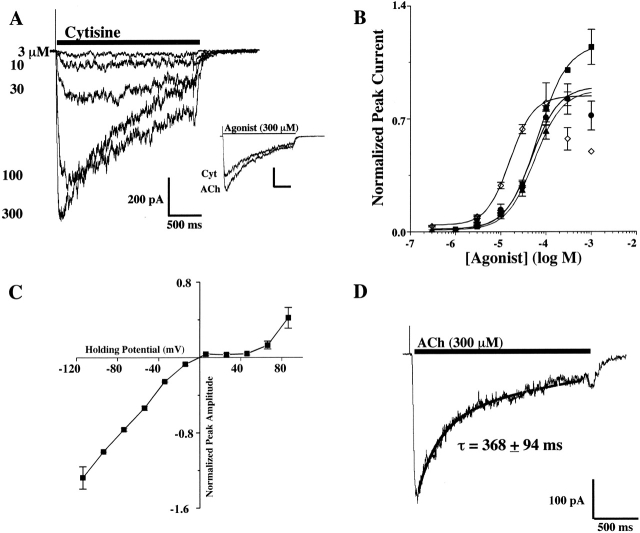Figure 1.
Functional and pharmacological properties of AChRs expressed by the human neuroblastoma cell line IMR-32. (A) A family of currents recorded in response to increasing concentrations of Cyt for a cell clamped at −60 mV. In the inset, the scaled response of this cell to a maximally effective concentration of Cyt (300 μM) is shown relative to the response to ACh (300 μM) which was chosen to define agonist efficacy. (B). The full concentration/response relationships are shown for ACh (▪), Nic (•), Cyt (▴), and DMPP (⋄). With the exception of DMPP, all agonists had similar potencies. The EC50 values were 66 ± 5 μM for ACh, 48 ± 8 μM for Nic, 57 ± 3 μM for Cyt, and 16 ± 1 μM for DMPP. The relatively high efficacy of Cyt and the relatively high potency of DMPP were the most distinguishing pharmacological properties found for the IMR-32 AChR response. (C). The current/voltage relationship for IMR-32 cells recorded in response to application of 100 μM ACh. The currents were no longer inward at ∼0 mV, which was consistent with a nonselective cation channel. The currents exhibited strong inward rectification, but when depolarized beyond +60 mV, outward currents were observed. (D). Representative recording and exponential fit of the current decay for IMR-32 cells.

